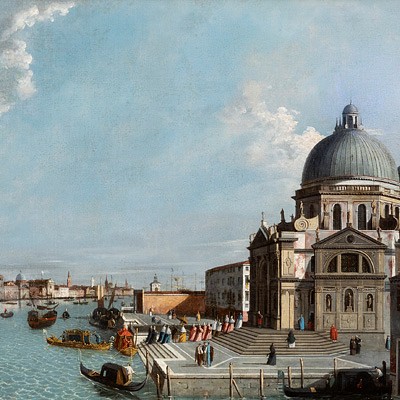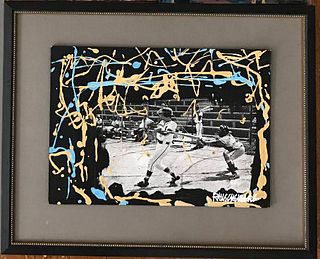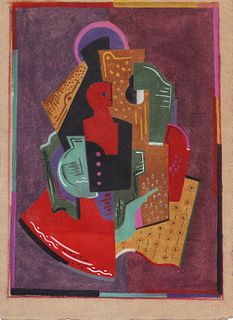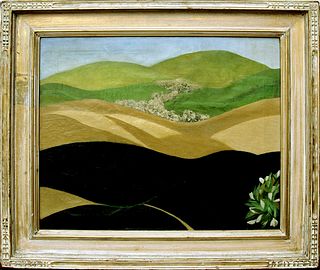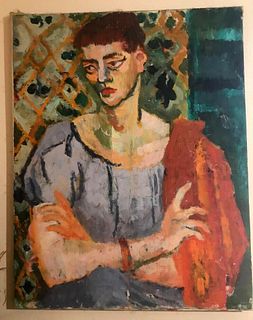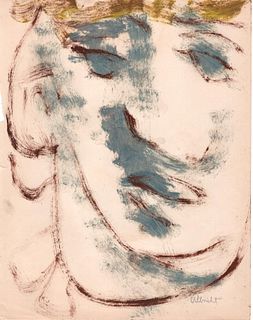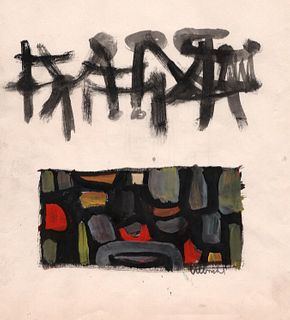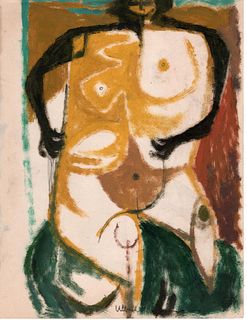ELISEO MEIFRÈN ROIG (Barcelona, 1857 - 1940). "Landscape". 1882. Oil on canvas. Signed and dated in the lower right corner.
Lot 72
About Seller
Setdart Auction House
Carrer Aragó 346
Barcelona
Spain
Setdart Subastas was born in 2004 and is currently the first online art auction in Spain with solidity, prestige and reliability guaranteed by our more than 60,000 users. Setdart has a young, dynamic and enterprising team ready to successfully manage the purchase and sale of art works through custom...Read more
Estimate:
EUR€6,000 - EUR€7,000
$6,451.61 - $7,526.88
Absentee vs Live bid
Two ways to bid:
- Leave a max absentee bid and the platform will bid on your behalf up to your maximum bid during the live auction.
- Bid live during the auction and your bids will be submitted real-time to the auctioneer.
Bid Increments
| Price | Bid Increment |
|---|---|
| EUR€0 | EUR€10 |
| EUR€200 | EUR€25 |
| EUR€500 | EUR€50 |
| EUR€1,000 | EUR€100 |
| EUR€3,000 | EUR€200 |
| EUR€5,000 | EUR€500 |
| EUR€10,000 | EUR€1,000 |
| EUR€20,000 | EUR€2,000 |
| EUR€50,000 | EUR€5,000 |
About Auction
By Setdart Auction House
May 18, 2021
Set Reminder
2021-05-18 09:30:00
2021-05-18 09:30:00
America/New_York
Bidsquare
Bidsquare : Classics XIX and XX
https://www.bidsquare.com/auctions/setdart-auction-house/classics-xix-and-xx-6961
The next 18th May there will be a 19th and 20th Century Classics Auction at Setdart.com There will be a select repertoire of important artists such as Carlos Cruz Diez, Luis Feito, Joan Miró, Fernando Botero, Josep Llimona, Salvador Dalí among others. Setdart Auction House sofia@setdart.com
The next 18th May there will be a 19th and 20th Century Classics Auction at Setdart.com There will be a select repertoire of important artists such as Carlos Cruz Diez, Luis Feito, Joan Miró, Fernando Botero, Josep Llimona, Salvador Dalí among others. Setdart Auction House sofia@setdart.com
- Lot Description
ELISEO MEIFRÈN ROIG (Barcelona, 1857 - 1940). "Landscape". 1882. Oil on canvas. Signed and dated in the lower right corner. Measurements: 69 x 109.5 cm; 99.5 x 139.5 cm (frame). In this autumn landscape, with a flock of birds fleeing towards the horizon, in a sky subtly iridescent by the light of twilight, Meifrèn manages to convey a restrained and intense emotion. A disciple of Antonio Caba at the School of Fine Arts in Barcelona, after finishing his studies he spent some time in Paris, where he coincided with the public beginning of impressionism and became acquainted with painting "à plen air". He returned to Barcelona in 1879 and, that same year, he won the gold medal at the Regional Exhibition of Valencia. The following year he made his individual debut at the Sala Parés in Barcelona, where he continued to exhibit regularly from then on. He was part of the modernist group, and frequented Els Quatre Gats. Although he also dedicated himself to portraiture, Meifrèn was eminently a landscape and marine painter. He was one of the discoverers of the pictorial possibilities of Cadaqués, and he also used to paint Mallorcan landscapes (he was director of the School of Fine Arts in Palma). He made several trips in search of new landscapes, especially to France but also to the Canary Islands, Belgium, Italy and the United States. He held exhibitions in Barcelona, Madrid (1881), Chicago (1893), Paris (1899), Brussels (1910), Santiago de Chile (1910), Buenos Aires (1910), Amsterdam (1912) and San Francisco (1915), among many other cities around the world. His style began with the detailed realism that dominated the Catalan school at the end of the 19th century, and gradually evolved towards impressionism, a language that would not be fully evident in his work until his later years. Thus, in his maturity we will see a landscape painting of purely chromatic and luminous treatment, which leaves aside the detailed description of the real model to capture an impression of nature, a purely visual and purely plastic image, in which the loose, impastoed and precise brushstroke configures shapes and spaces based on the juxtaposition of colors. Throughout his career he won a multitude of awards, including the first medals at the National Exhibition of Fine Arts in Madrid (1906) and Barcelona (1896), the Nonell prize in Barcelona (1935), the bronze medal at the Universal Exhibition in Paris (1888) and the grand prizes at the International Exhibitions of Buenos Aires (1910) and San Diego (1916). In 1952, the Barcelona City Council dedicated a retrospective exhibition to him, held at the Palacio de la Virreina. He is currently represented in the Prado Museum, the National Art Museum of Catalonia, the MACBA of Barcelona and the Thyssen-Bornemisza, among many others.
- Shipping Info
-
In-House Shipping
-
- Buyer's Premium



 EUR
EUR CAD
CAD AUD
AUD GBP
GBP MXN
MXN HKD
HKD CNY
CNY MYR
MYR SEK
SEK SGD
SGD CHF
CHF THB
THB





